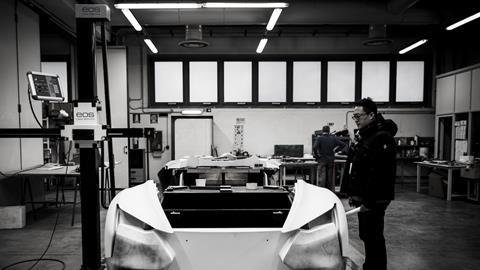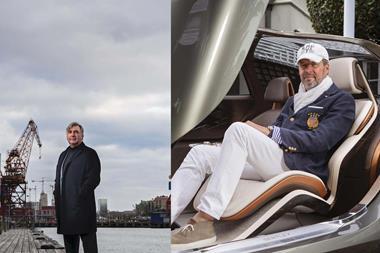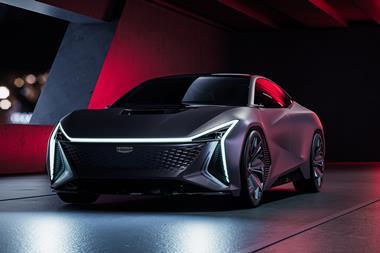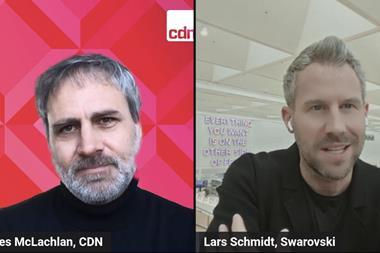The Ji Liu and the Yu Yue concept cars, both launched in Shanghai this year, hinted at a new design direction for Chinese domestic car manufacturer Changan, so we travelled to the firm’s Turin studio, where they were developed, to find out more.
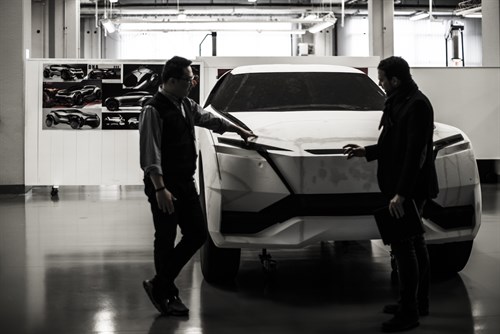
Head of Design Chen Zheng discusses the the Yu Yue concept with one of his designers in the Turin studio
Contrary to our expectations it isn’t a small satellite studio but looks and feels like a major, fully-functioning operation with 152 employees, modelling, advanced design, a vast Powerwall and milling machines. The company obviously takes design seriously. As Changan Global Design Centre Director Chen Zheng told CDN: “We are a bunch of people who love and are doing great design. We want to use design to change not only our company but also the world. Design can give products and brands added value, but without high costs.”
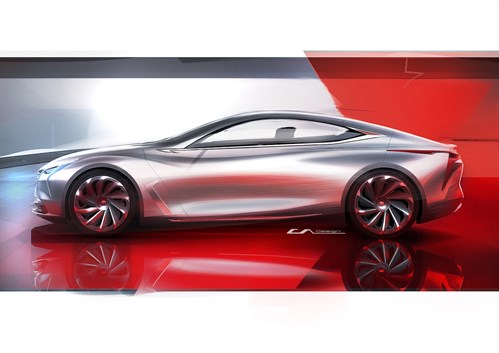
Sketch of the Ji Liu concept
The Ji Liu Sedan concept and the Yu Yue, an SUV concept with distinctive ‘lava’ themed wheels were both designed in Turin – nearly all Changan’s V logo cars are now designed in Turin. But sedans are not the future for the Chinese market, according to Chen Zheng. The Chinese market is having an SUV boom, and, according to Chen Zheng, this will soon be replaced by MPVs as families expand. The sedan is, however, an excellent form to explore future and luxury design. The Ji Liu concept has a distinctive, large grille and nice proportions but its most interesting feature is the expression of Changan’s new design language, Vitality Motion.
“We don’t want to just copy Chinese graphics onto the car,” says Chen Zheng. Vitality Motion is about articulating an approach to design that embeds creativity while giving creative freedom to individual designers. On the Ji Liu full-size clay, details such as the shoulder line, chrome headlight accents, coupé curves and striking front end stand out. Hu Jian, Vice General Manager explained how Vitality Motion informed the design: “Do you see how the shoulder line stops and starts above the rear wheelarch? This stop-start is very deliberate. It is used in Chinese art to denote that the spirit continues in your mind’s eye. It allows you to fill the space with your imagination.”
The new creative approach at Changan has enabled the design department to change the packaging and layout of the vehicles they are creating, rather than designing to set sizes. Vitality Motion was first conceived in 2014, and Chen Zheng spent the next two years convincing others at Changan to change the reporting lines to put design first. Since 2016 Chen Zheng has been reporting directly to the Chairman of the company, an indication of the increasing importance of design in Changan, and, more widely for Chinese domestic car manufacturers as Chinese consumers begin to exercise real choice in the market.
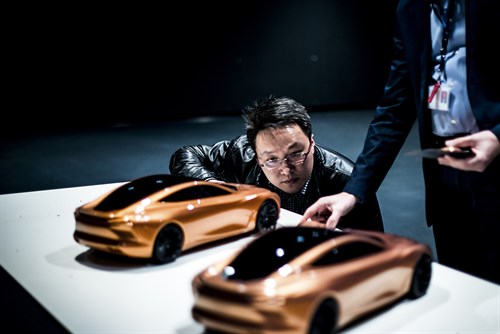
Chen Zheng, seen here with Ji Liu models, has spearheaded the new Changan design direction, Vitality Motion
The new project (still under wraps on the day of our visit) is a B segment vehicle, around five metres long. “Our first design proposal with the new design language was finished two years ago, and it was like the first stone cast into the water. It has changed the normal processes. Usually engineering is set, then the designer gets to work, but this time design set the vehicle size and engineering was tasked to fulfil it. Step-by-step we convinced engineering.”
Changan had a static platform for B segment vehicles with a very traditional layout. “We knew it wouldn’t work,” Chen Zheng recalled, “so we took our design and mocked up a milled foam package model with the concept car language but to the existing platform package. Then we showed it to the management and engineers. They all agreed that although it was the same language it looked horrible. We had to change the platform as quickly as possible.
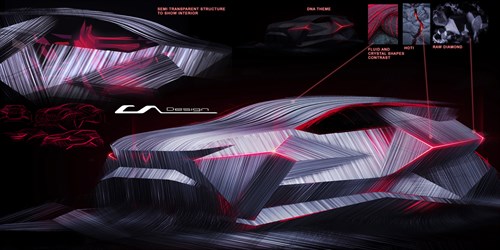
Conceptual sketch of the Yu Yue concept SUV
“Design identity is very important but 11 years ago we didn’t realise this at Changan. Back then all Chinese companies were just trying to solve one issue – how to design and produce a car. Chinese carmakers were selling a lot of ‘ugly’ cars, because the market couldn’t get enough of them. This has changed. By 2011 Chinese people wouldn’t buy an ugly car, now they want a well-designed car. Design must function correctly and be beautiful,” said Zheng.
The history of design education in Chinese universities partly explains why many Chinese manufacturers set up studios abroad. When Chen Zheng was studying (before 2000) there were no transport design courses in China – you could only study to be a mechanical design engineer. “Many of the people teaching in universities have never designed a car. The emphasis seems to be on great painting and sketching skills.” Setting up a studio in Europe was partly to hire experienced and well-trained designers. And as the market in China has matured, so too has the studio.
But how can Turin-based international designers understand what Chinese consumers want? Changan Design’s approach is to conduct their own in-depth consumer research, and apply it to their work. On a recent EV concept project, research was done into material choices. Hu Jian explained: “Chinese consumers are young and very interested in texture. We found that the feel of materials is critical. You touch with your hands, feel the temperature by hand. Touch is really important. Colour and trim choices become critical here.”
Designers also spend a lot of time understanding the design philosophy. Chen Zheng told us that while he won’t tell his designers what to do, he will tell them what not to do: “It should not have flat surfaces, or be boring. It must surprise, constantly twisting and changing. This is Vitality Motion. If I give them a set front grill design, everyone will get stuck doing that.”
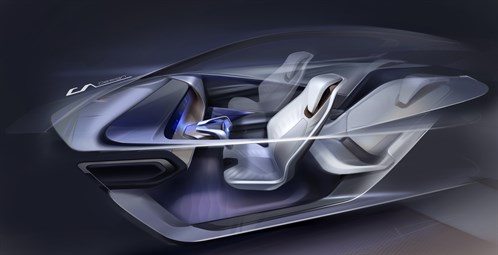
Interior sketch for the Ji Liu
“I have seen people transfer a Chinese window pattern onto a door handle. No one will be fooled by this. This is just a marketing approach, not design. My designers understand this, they use the Eastern philosophy to design, but the skill is totally Western. We mix our cultures, we embrace the conflict and have created a unique design language. It isn’t Western or Eastern – it is a unique Changan hybrid.”
“Vitality Motion is a constant evolution,” says Chen Zheng. It aims to instil constant creativity and change; a difficult goal when you are trying to establish brand identity.
But if the most recent Changan concepts are any indication of future production vehicles, it is a struggle worth the effort.

The Ji Liu in clay































